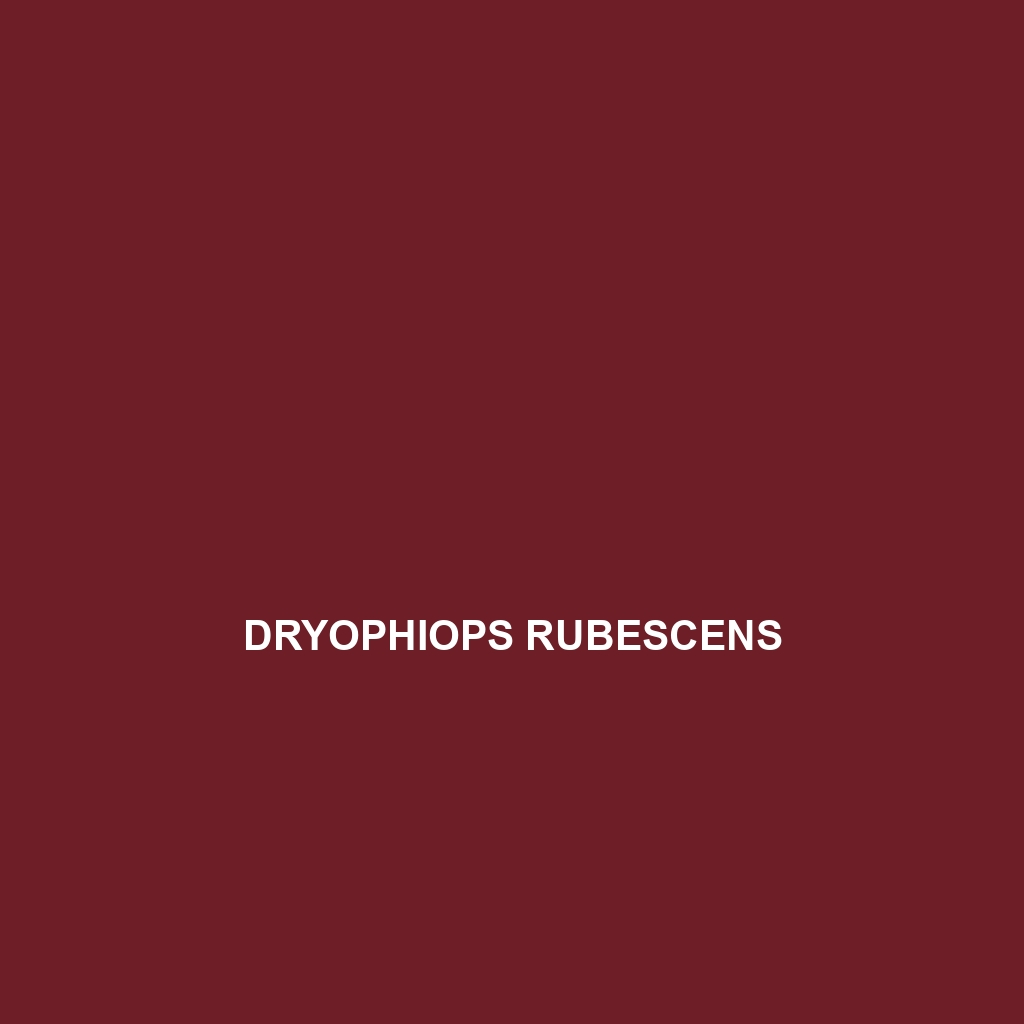Common Name
Dryophiops rubescens
Scientific Name
Dryophiops rubescens
Habitat
Dryophiops rubescens, commonly known as the reddish-green snake, primarily inhabits coastal rainforests and tropical woodlands. This species is predominantly found in Southeast Asia, particularly in the northern regions of the Malay Peninsula, Borneo, and Sumatra. The climate in these areas is characterized by high humidity and temperatures that typically range between 21°C (70°F) and 32°C (90°F). Reddish-green snakes thrive in dense foliage, as their coloration aids in camouflage, allowing them to blend seamlessly into their rainforest environment. They often inhabit areas near water bodies, such as streams and wetlands, contributing to their adaptability in varying environmental conditions.
Physical Characteristics
Reddish-green snakes are distinguished by their striking coloration and slender body shape, typically measuring between 1 to 1.5 meters (3 to 5 feet) in length. Their skin exhibits a unique hue, with vibrant green scales intertwined with reddish tones, which serves as effective camouflage in the dappled sunlight of their forest habitat. The eyes are large and prominent, aiding in their nocturnal lifestyle, and they possess a narrow head that transitions smoothly into a long, cylindrical body. Additionally, the scales are smooth and glossy, facilitating swift movements through the underbrush.
Behavior
The behavior of Dryophiops rubescens is particularly noteworthy, especially regarding its nocturnal tendencies. These snakes are primarily active during the night, which helps them avoid predators and improves their hunting efficiency. They exhibit unique hunting techniques, often employing ambush tactics to capture their prey. During the day, they can be found basking on low vegetation or hiding under leaf litter. Although they are generally solitary creatures, they may occasionally be observed engaging in social interactions during the mating season. Their mating rituals are intriguing and often involve elaborate courtship displays, highlighting their vibrant colors to attract potential mates.
Diet
Dryophiops rubescens is classified as a carnivore, primarily preying on small reptiles and amphibians, particularly frogs and lizards, which are abundant in their rainforest habitat. Their feeding patterns are opportunistic, allowing them to adapt to the availability of prey in their surroundings. They possess sharp, recurved teeth that facilitate gripping their slippery catches, and their agile bodies enable them to navigate swiftly through the underbrush in pursuit of food. Studies suggest that their diet also includes various insects, making them opportunistic feeders capable of adjusting to changes in prey availability.
Reproduction
The reproductive cycle of Dryophiops rubescens is marked by seasonal fluctuations, with mating typically occurring during the wetter months when food is plentiful. The gestation period lasts about 60 to 90 days, after which females give birth to 5 to 10 live young, a relatively low number that highlights the investment in each offspring. The young snakes are independent from birth and are equipped to hunt for themselves almost immediately. Parental care is minimal post-birth, as these snakes instinctively rely on their natural behaviors to survive in the wild.
Conservation Status
The conservation status of Dryophiops rubescens is currently classified as “Least Concern” by the International Union for Conservation of Nature (IUCN). However, habitat loss due to deforestation and agricultural expansion poses significant threats to their populations. Conservation efforts are required to maintain their natural habitats and mitigate risks from human encroachment. Awareness programs aimed at preserving rainforest ecosystems are essential to ensure that this unique species continues to thrive in its native environment.
Interesting Facts
One of the most fascinating traits of Dryophiops rubescens is its ability to change color slightly, adjusting its hue based on environmental factors such as temperature and humidity. This adaptation not only enhances its camouflage but also allows it to regulate body temperature more efficiently. Additionally, these snakes are often mistaken for other species due to their similar coloration, making them an interesting subject for herpetologists studying biodiversity in tropical rainforests.
Role in Ecosystem
Dryophiops rubescens plays a vital role in its ecosystem as both a predator and prey. By controlling the populations of insects, lizards, and amphibians, it contributes to balancing the food web within its habitat. Moreover, as a prey item for larger reptiles and birds of prey, it serves as a crucial link in the ecological chain. Understanding the ecological role of the reddish-green snake highlights the importance of conserving rainforest ecosystems, where every species, no matter how small, contributes to overall ecological health.
